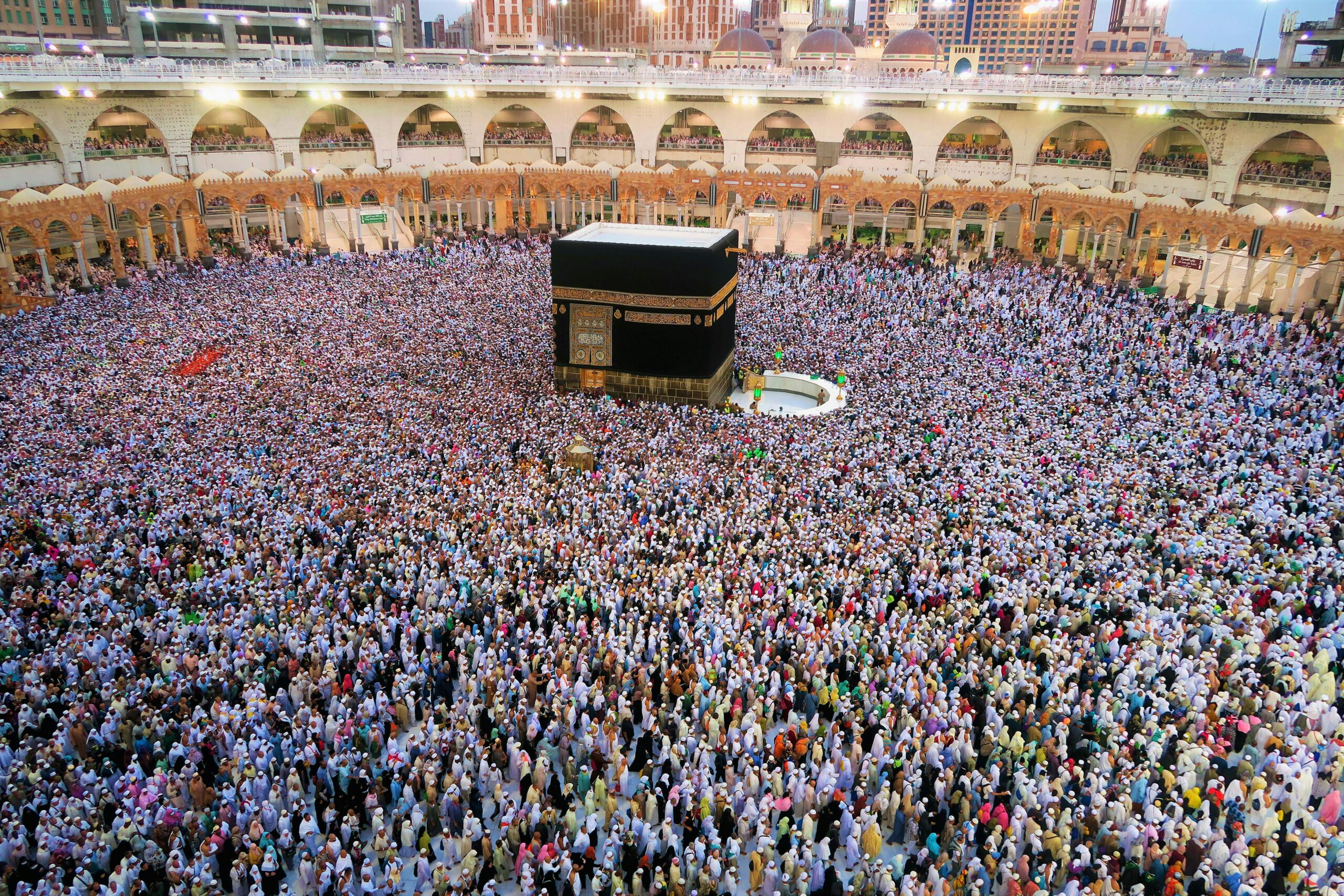Hajj 2024: Embarking On A Transformative Sacred Journey
Hajj 2024, pilgrimage, spiritual journey, the significance of Hajj, Ihram, Tawaf, Sa’i, Mount Arafat, Muzdalifah, Mina, Eid al-Adha, practical tips, preparation, devotion, unity, Islam, transformation, faith, reflection
Welcome to the ultimate guide for Hajj 2024, the sacred pilgrimage that holds profound significance for millions of Muslims around the world. In this comprehensive article, we will dig into the spiritual, historical, and practical aspects of Hajj, ensuring you have all the information you need to embark on this transformative journey. Get ready to discover the essence of Hajj and how you can make the most of this extraordinary experience.
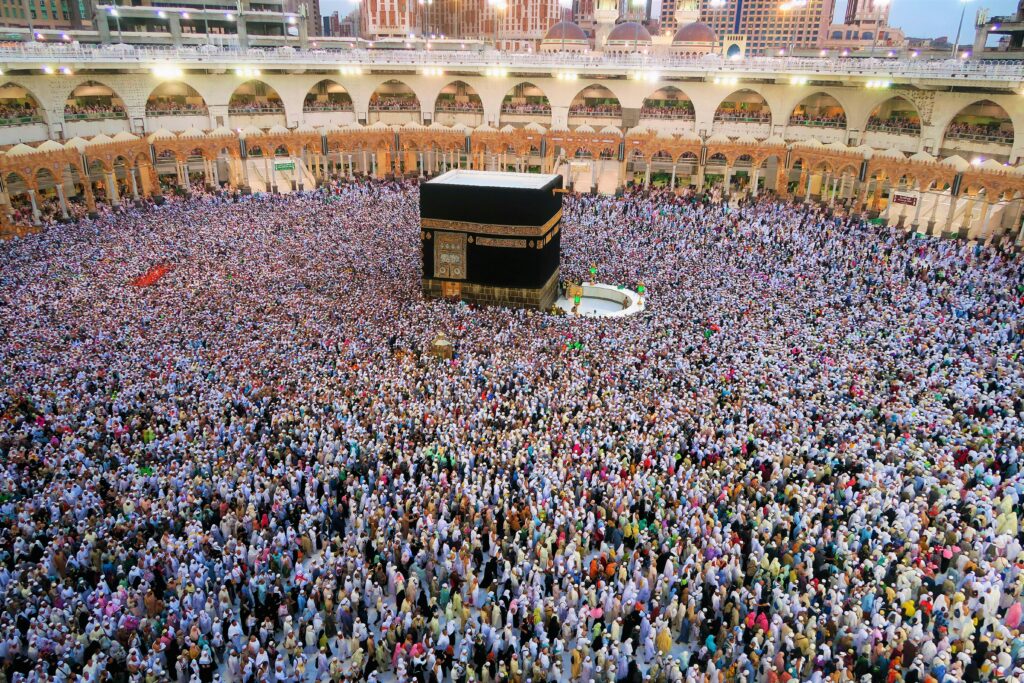
Hajj: The History and Significance
The history of Hajj dates back to the time of Prophet Ibrahim (Abraham). According to Islamic tradition, Prophet Ibrahim was commanded by Allah to build the Kaaba in Mecca. The Kaaba is the holiest site in Islam, and it is the focal point of Hajj.
Hajj has been practised by Muslims for centuries. In the early days of Islam, Hajj was a relatively simple affair. However, as Islam spread and the number of pilgrims increased, Hajj became more complex and organized.
Today, Hajj is a major undertaking that requires careful planning and preparation. Millions of Muslims from all over the world travel to Macca each year to perform Hajj.
Hajj is one of the most important religious rituals in Islam. It is a time for Muslims to come together from all over the world to worship Allah and reaffirm their faith. It is also a time for Muslims to reflect on their lives and to make a fresh start.
Hajj is a reminder of the importance of submission to Allah. It is also a reminder of the importance of brotherhood and sisterhood among Muslims.
Hajj is a religious pilgrimage that every able-bodied and financially capable Muslim is obligated to undertake at least once in their lifetime. It is a remarkable journey that symbolizes unity, equality, and devotion to Allah. The rituals of Hajj trace back to the time of the Prophet Muhammad (peace be upon him), commemorating the trials and triumphs of the Prophet Ibrahim (Abraham) and his family. The Hajj Journey
The Hajj journey is a unique and unforgettable experience. It is a time to come together with Muslims from all over the world to worship Allah and reaffirm your faith. It is also a time to reflect on your life and to make a fresh start. 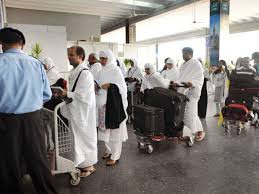
The journey begins in Macca, the holiest city in Islam. Pilgrims arrive in Macca and wear the Ihram, a special white garment that symbolizes purity and equality. They then circumambulate the Kaaba, the holiest site in Islam, seven times.
After circumambulating the Kaaba, pilgrims travel to Mina, a place located outside of Macca. In Mina, pilgrims stay overnight and throw stones at three pillars that represent the Devil. This ritual is a symbolic rejection of temptation and evil.
On the 10th of Dhu al-Hijjah, pilgrims travel to Arafat, a plain located outside of Macca. In Arafat, pilgrims spend the day in prayer and reflection. This is considered to be the most important day of Hajj.
After spending the day in Arafat, pilgrims travel back to Mina to perform the stoning ritual again. They then sacrifice an animal and distribute the meat to the poor. This is the final act of Hajj.
The Hajj journey is a physically and emotionally demanding experience. However, it is also a deeply rewarding one. It is a time to come closer to Allah and to experience the true meaning of Islam.
The Spiritual Journey Begins
Ihram: Entering the State of Sanctity
The pilgrimage commences with the pilgrims entering the sacred state of Ihram. This involves wearing simple white garments, a seamless garment for men, and loose modest clothing for women. The Ihram attire signifies equality, as all pilgrims dress identically, leaving behind any distinctions of wealth, status, or nationality. It serves as a powerful reminder of the unity of humanity and equality in the eyes of Allah.
Tawaf: Circumambulating the Kaaba
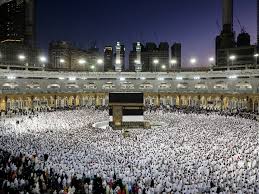
One of the most significant rituals of Hajj is Tawaf, where pilgrims circumambulate the Kaaba, the sacred house of Allah in Macca. As the heart of the Hajj pilgrimage, the Kaaba represents the focal point of worship for Muslims worldwide. Walking counterclockwise around the Kaaba seven times, the pilgrims express their reverence, humility, and dedication to Allah, while supplicating and seeking His blessings.
Sa’i: Reliving Hazrat Hejira’s Search for Water
Following Tawaf, the next ritual is Sa’i, reenacting the footsteps of Hazrat Hejira, the wife of Prophet Ibrahim. Pilgrims walk briskly between the hills of Safa and Marwa, symbolizing Bibi Hajira’s search for water for her son Ismail (Ishmael). This act signifies perseverance, trust in Allah’s providence, and the power of faith in challenging times.
Mount Arafat: The Peak of Devotion
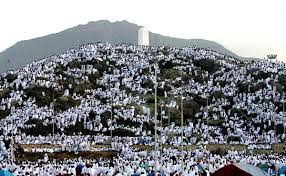
On the 9th day of Dhul-Hijjah, the pilgrims gather at Mount Arafat, known as the “Day of Arafah.” Standing on this sacred plain from noon until sunset, pilgrims engage in supplication, and reflection, and seek forgiveness from Allah. The atmosphere is charged with devotion, tears, and heartfelt prayers, as pilgrims beseech Allah’s mercy and grace.
Muzdalifah and Mina: Symbolic Rituals

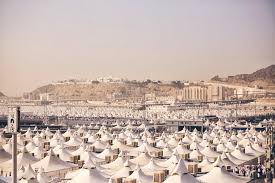

After leaving Arafat, pilgrims head towards Muzdalifah, where they spend the night under the open sky, engaging in prayers and collecting pebbles. The next day, they proceed to Mina, where they perform the symbolic stoning of the devil by casting pebbles at stone pillars. This ritual signifies the rejection of evil temptations and affirming one’s commitment to righteousness.
Eid al-Adha: Celebrating Sacrifice Eid al-Adha, also known as the “Festival of Sacrifice,” holds deep significance in Islamic tradition. Let me delve into the philosophy behind this important festival:
- Historical Context:
- Eid al-Adha commemorates the willingness of the Prophet Ibrahim (Abraham) to sacrifice his son, Prophet Ismail (Ishmael), as an act of obedience to Allah (God).
- According to Islamic tradition, when Ibrahim was about to sacrifice Ismail, Allah intervened and provided a ram to be sacrificed instead. This act demonstrated Ibrahim’s unwavering faith and submission to God’s will.
- Symbolism and Lessons:
- Sacrifice: The essence of Eid al-Adha is rooted in the willingness to make sacrifices in obedience to Allah. Beyond the historical commemoration, it serves as a reminder to Muslims today to sacrifice their desires, bad habits, and selfishness for the sake of God and community welfare.
- Charity and Sharing: While the festival involves actual animal sacrifice, its underlying meaning goes beyond the physical act. Muslims are encouraged to share their wealth with those less fortunate, just as Ibrahim demonstrated when he was willing to sacrifice his beloved son. It symbolizes giving up something dear for the greater good.
- Community Spirit: Eid al-Adha fosters a sense of community and compassion. Families come together to perform communal prayers, share meals, and distribute meat from the sacrificed animals to relatives, neighbors, and the needy.
- Practical Observance:
- Eid al-Adha begins on the 10th day of Dhū al-Ḥijjah, the last month of the Islamic lunar calendar, and continues for an additional three days.
- Families that can afford to do so sacrifice a ritually acceptable animal (such as a sheep, goat, camel, or cow) and distribute the meat among themselves, the poor, and others.
- Visiting friends and family, exchanging gifts, and expressing gratitude are also part of the celebration.
The story of Prophet Ibrahim (known as Abraham in the Hebrew Bible) is rich with spiritual significance and serves as an example for believers across different faiths. Let’s dig into the life of this remarkable prophet:
- Childhood and Early Life:
- Birthplace: Ibrahim (A.S.) was born in the ancient city of Ur (also known as Babylon or Chaldea), which is currently located in Iraq.
- Family Background: His father, Aazar ibn Nahur, was a well-known idol sculptor. Ibrahim (A.S.) grew up watching his father create statues from stones and wood.
- Spiritual Insight: Even as a young child, Ibrahim (A.S.) possessed spiritual understanding and wisdom. Allah gifted him with insight beyond his years.
- Rejecting Idolatry:
- As Ibrahim (A.S.) observed his father’s idol-making, he questioned the purpose of these statues. His father explained that they represented gods, but Ibrahim (A.S.) rejected this idea.
- Rejecting idol worship, Ibrahim (A.S.) began to seek the truth. Allah says in the Quran: “Indeed We bestowed aforetime on Abraham his (portion of) guidance, and We Were Well Acquainted with him (as to his Belief in the Oneness of Allah, etc)” (Surah Anbiya: 21:51).
- The Friend of Allah (Khalilullah):
- Allah bestowed upon Ibrahim (A.S.) the title “Khalilullah,” which means “the friend of Allah.”
- Ibrahim (A.S.) is revered by Judaism, Christianity, and Islam. He is mentioned by name 69 times in the Quran.
- His lineage includes many great prophets, and he is one of the five Ulul’azm (Arch-Prophets) who received divine books and laws.
- Challenges and Obedience:
- Ibrahim (A.S.) faced severe trials and challenges throughout his life. Despite these hardships, he remained steadfast and obedient to Allah.
- Allah praises him in the Quran: “And of Ibrahim (Abraham) who fulfilled (or conveyed) all that (what Allah ordered him to do or convey)” (Surah An-Najam: 53:37).
- Building the Kaaba:
- Guided by Allah, Ibrahim (A.S.) migrated with his wife Sarah and son Ismail to a barren valley. There, he built the Kaaba—the sacred house of worship in Mecca.
- The Kaaba symbolizes monotheism and the unity of all believers.
- The Ultimate Test: Sacrificing His Son:
- Allah tested Ibrahim (A.S.) by commanding him to sacrifice his beloved son, Ismail.
- Despite the immense emotional struggle, Ibrahim (A.S.) remained faithful. Allah intervened and provided a ram for the sacrifice instead.
- Legacy:
- Ibrahim (A.S.) left a legacy of unwavering faith, obedience, and devotion to Allah.
- His story inspires believers to prioritize their relationship with God above all else.
Remember that the story of Prophet Ibrahim (A.S.) teaches us about trust, sacrifice, and the importance of following Allah’s guidance. For more detailed accounts, you can explore various sources, including IslamicFinder, Wikipedia, and Al-Islam.org1234
In summary, Eid al-Adha emphasizes selflessness, compassion, and devotion to God. It encourages Muslims to reflect on their own sacrifices and to contribute to the well-being of their communities.
The culmination of Hajj coincides with the celebration of Eid al-Adha, the Festival of Sacrifice. Pilgrims perform the sacrifice of an animal, typically a lamb or goat, to honor the obedience and devotion of Prophet Ibrahim. The meat is distributed among the needy, symbolizing compassion, generosity, and unity within the Muslim community.
Practical Tips
Now that we have explored the spiritual aspects of Hajj, let’s turn our attention to some practical tips to ensure a smooth and fulfilling pilgrimage:
The Saudi government has issued updated guidelines and instructions for Hajj 2024 to prioritize the health and safety of pilgrims. Here are the key conditions and requirements:
- Hajj Permit and Registration:
- All pilgrims must obtain a Hajj permit through the Nusk platform. This permit is crucial for the legitimacy of their pilgrimage.
- Additionally, registration through the Sehaty application is required to verify vaccination status.
- Vaccination Requirements:
- Residents within Saudi Arabia must have received the following vaccines within the last five years:
- COVID-19 vaccine
- Influenza vaccine
- Meningitis vaccine
- International pilgrims are required to have the Neisseria meningitidis vaccine administered at least 10 days but not more than five years prior to their arrival. This should be verified by a certificate from their home country. They must also be vaccinated against polio.
- Residents within Saudi Arabia must have received the following vaccines within the last five years:
- General Conditions for All Pilgrims:
- A valid passport through at least the end of Dhu Al Hijjah 1445 (June 7, 2024).
- A minimum age requirement of 12 years.
- Vaccinations against COVID-19, seasonal flu, and meningitis.
- A health certification confirming that the pilgrim is free from any infectious diseases.
- Importance of Official Permits:
- The Council of Senior Scholars emphasizes that performing Hajj without an official permit is considered sinful.
These measures aim to facilitate the smooth conduct of Hajj rituals and enhance the quality of services provided to pilgrims, ensuring a safe and spiritually fulfilling experience for all attendees.
For more detailed information, you can refer to the official document issued by the Ministry of Health in Saudi Arabia12
When participating in Hajj, it’s crucial to follow health protocols to ensure a safe and fulfilling pilgrimage. Here are the key guidelines:
- Vaccinations:
- Neisseria Meningitidis: All pilgrims must have a valid vaccination certificate showing they received the quadruple meningitis vaccine (ACYW) at least ten days before entering Hajj areas. Acceptable vaccines include:
- Quadruple (ACYW) polysaccharide vaccine (valid up to three years since vaccination).
- Quadruple conjugate (ACYW) vaccine (valid up to five years since vaccination).
- Polio: Pilgrims coming from regions with circulating wild poliovirus or vaccine-derived poliovirus must have a valid certificate showing they received at least one dose of bivalent oral polio vaccine (Bopv) or inactivated polio vaccine (IPV) within the last 12 months before entering the Kingdom.
- Yellow Fever: Pilgrims from regions where yellow fever is prevalent must show a valid certificate indicating vaccination against yellow fever.
- COVID-19 (SARS-CoV-2): All prospective Hajj pilgrims aged 12 years or older must complete the required doses of a Kingdom-approved COVID-19 vaccine. Accepted vaccines include Pfizer-BioNTech, Moderna, Oxford/AstraZeneca, Janssen, Covovax, Nuvaxovid, Sinopharm, Sinovac, Covexin, and Sputnik V.
- Seasonal Influenza: It’s advisable for all travelers to receive the seasonal flu vaccine at least ten days before arriving in the Kingdom.
- Neisseria Meningitidis: All pilgrims must have a valid vaccination certificate showing they received the quadruple meningitis vaccine (ACYW) at least ten days before entering Hajj areas. Acceptable vaccines include:
- Personal Care:
- Ensure you have essential personal care products such as towels, toothbrushes, and toothpaste.
- Visit a doctor at least one month before traveling to review your health status and assess any potential risks during the pilgrimage.
- Hygiene Practices:
- Maintain good hygiene by washing hands frequently.
- Pay attention to oral hygiene and dental care.
- Avoid hugging and shaking hands.
Remember that prioritizing your health during the Hajj is essential for a safe and spiritually enriching experience.
Preparing for Hajj
- Ensure you meet the physical and financial requirements for Hajj.
- Familiarize yourself with the rituals and their significance.
- Consult with a reputable travel agency specializing in Hajj packages.
- Arrange necessary travel documents, visas, and vaccinations well in advance.
- Pack essentials such as comfortable clothing, medications, and personal hygiene items.
- Pack the right clothes and supplies You will need to pack appropriate clothing and supplies for Hajj. This includes items such as the Ihram, a compass, sunscreen, and a hat.
During Hajj
- Stay hydrated and maintain a healthy diet throughout the pilgrimage.
- Follow the instructions of your group leader and adhere to the designated schedule.
- Be patient and respectful towards fellow pilgrims, as millions gather from diverse backgrounds.
- Engage in remembrance of Allah, supplication, and reflection during the rituals.
- Keep your belongings secure and be cautious of potential scams or pickpocketing.
Post-Hajj Reflection
- Reflect upon the transformative experiences and lessons gained during Hajj.
- Share your experiences with family, friends, and the wider community.
- Uphold the values of Hajj in your daily life, promoting unity, compassion, and generosity.
- Continue seeking knowledge and deepening your understanding of Islam.
- Support charitable causes that benefit those in need, both locally and globally.
Conclusion
Embarking on the Hajj pilgrimage is a profound spiritual journey that encompasses faith, devotion, and unity. By participating in sacred rituals, pilgrims from around the world come together to strengthen their bond with Allah and experience the true essence of Islam. The significance of Hajj goes beyond a physical journey; it is a spiritual awakening that leaves a lasting impact on the hearts and minds of those who undertake it.
Whether you are preparing for Hajj 2024 or simply seeking to understand this remarkable pilgrimage, this article has provided you with a comprehensive guide. Remember, Hajj is a unique opportunity to connect with your faith, purify your soul, and embrace the universal values of Islam. May your journey be blessed, and may your prayers be answered.
If you enjoyed this article, please like and share it with your friends, and don’t forget to Share your personal experience/observations thoughts and valuable suggestions to share for the education /benefit of others. Do subscribe to remain onboard and get more great content!
Eid ul-Fitr 2024: Embracing Blessings and Spreading Love Focus
